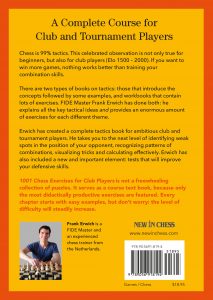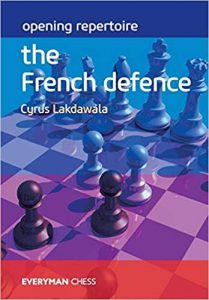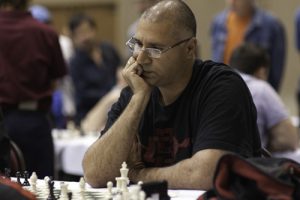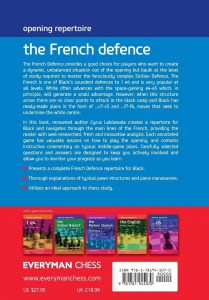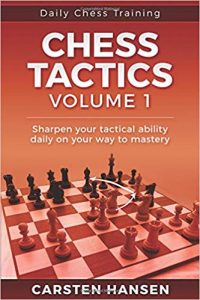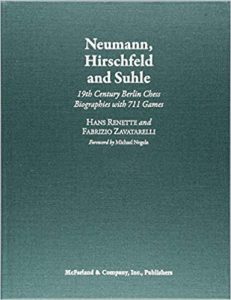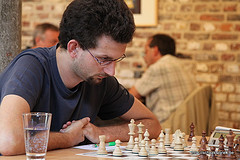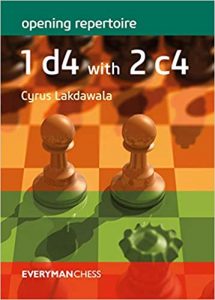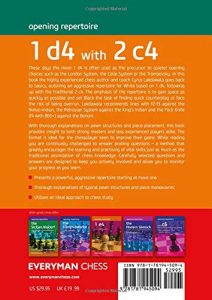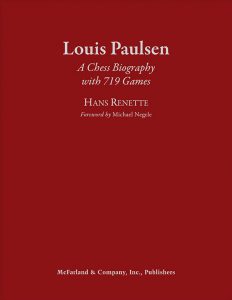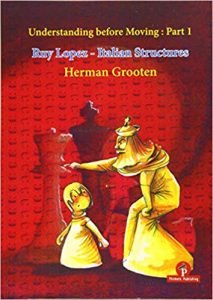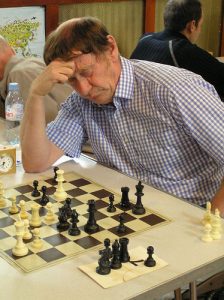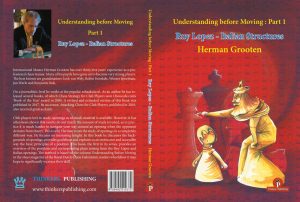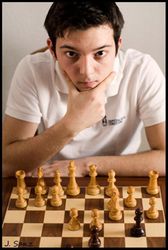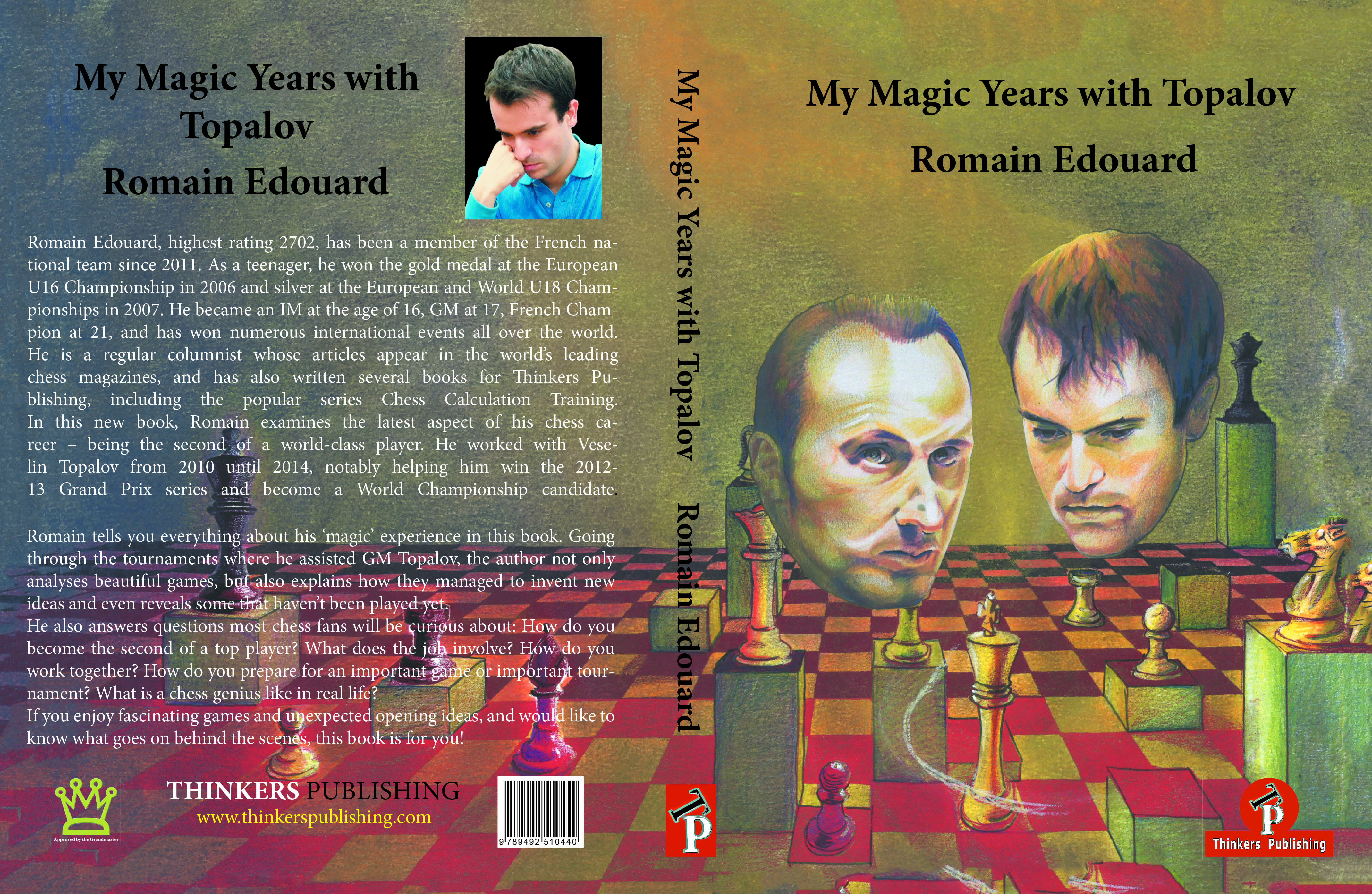1001 Chess Exercises for Club Players : Frank Erwich
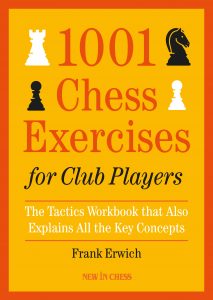
“Tactics is knowing what to do when there is something to do; strategy is knowing what to do when there is nothing to do.” – Savielly Tartakower
Every chess player enjoys (or should !) solving and practising tactics and, let’s be pragmatic, most games at mortal level are decided by executing them if the conditions are right. Creating suitable conditions is, of course, another book or books and I’m confident New in Chess will publish such material in due course.
FIDE Master Frank Erwich is a a professional chess teacher for the Royal Dutch Chess Federations, coach and active player. In 2012 he established a teaching company and, from his own web site :
He works as an editor for New in Chess, he helps with the development of material for chess books and chess apps, he writes about chess (including author of 1001 Chess Exercises for Club Players and the e-book Basic Chess rules for Kids ), he makes online lessons for starting chess players and he is regularly active as a coach during a chess tournament (including during the European Youth Championship in 2014, 2015 and 2016).

So, what is 1001 Chess Exercises for Club Players about ?
The author has identified 1001(!) positions from recent tournament praxis the majority of which are from the last ten years. This, in itself, is a tour de force as many previous tactics books bring a strong sense of déjà vu. He has categorised them into ten groupings viz :
- Elimination of the Defence
- Double Attack
- Discovered Attack
- Skewer (or x-ray for our USA readers !)
- Pin
- Trapping a piece
- Promotion
- Draw
- Mate
- Defending
and then follows these with a chapter entitled “Mix” which combines many of the previous themes and of course, a Solutions to each exercise chapter.
As with every recent New in Chess publication high quality paper is used and the printing is clear. The book can easily be laid flat next to the board and does not require weights to prevent it from “self-closing” (a particular bugbear of mine !). Each diagram clearly shows who is to move and the instructional text is typeset in two column format, which, I find, enables the reader to maintain their place easily. Figurine algebraic notation is used throughout and the diagrams are placed adjacent to the relevant text.
You might have noticed that in the list of categories the author has inserted “Trapping a piece” and “Defending” which are welcome (not often discussed) themes among the more familiar ones.
Each chapter kicks-off with a description of the theme in question followed by high quality examples. All jargon and terms are explained in detail making each section self-contained eliminating the need to go elsewhere to cross-reference. Sometimes the author invents his own terminology (such as “away” and “chasing”) in cases where there is a need and all is carefully explained.
Following the instructional text and examples there are, on average 100 test positions given as groups of twelve per page. Each diagram clearly indicates who is to move and underneath most is a hint such as “magnet + double check”. I prefer to hide the hint but some will value these clues. Of course, after say a dozen in one section, one gets a feel for what is expected and this forms part of the training. Each solution provides useful analysis (which has been engine checked) plus contextual information about the source game, players and event.
To give you some idea of the content here is an excerpt from the training section on Elimination of the Defence :
“We conclude this chapter with a spectacular move:
Li Chao, 2746
Nigel Short, 2666
Baku ol 2016 (7) (analysis)
36. Qe6!
This is called a Novotny Interference! The queen is sacrificed on a square where it can be captured in four ways, but whichever black piece makes the capture, it interferes with the range of the other pieces:
36…Rxe6 (and Nxe6) interupts the a2-g8 diagonal and allows 37.Rg8#, while 36…Bxe6 closes off the sixth rank and runs into 37.Bxf6+ Rg7 38.Bxg7#.36…Rg7 prevents immediate mate, but after37.Bxf6 Black will also have to lay down his king before long.”
Here is one of the more challenging exercises :
The hint is “away + material”
and the solution is :
“31…Qe5! 32.Qxe5 32.Qd2 Rxc1+ 33.Qxc1 Qxd4+ -+. 32…Rxc1+ 33.Kf2 Rxe5 34.Nxf6 Kxf6 35. Rxd7 Re7 -+ Jonkman Inza – K. Arnold, Assen ch-NED jr W 2019 (analysis).”
Finally, a detailed glossary in itself provides learning opportunities to improve one’s knowledge.
It was a pleasure to work through the exercises and they provided ideas for my student lessons and coaching. Possibly the most enjoyable section was Chapter 11 entitled “Mix”. This is the best test of what has gone before since there is no declared theme, and, more often than not, no visible hint. You are on your own and you might start a chess timer with each new position to provide motivation and test your speed and accuracy of solution.
In summary this is an excellent book that goes highly recommended. If I hadn’t had it to review then I would have purchased it anyway ! It it much than more than “just another tactics book”.
John Upham, Cove, Hampshire, June 20th 2019

Book Details :
- Hardcover : 192 pages
- Publisher: New In chess (3 April 2019)
- Language: English
- ISBN-10: 9056918192
- ISBN-13: 978-9056918194
- Product Dimensions: 16.9 x 1.2 x 24 cm
Official web site of New in Chess
